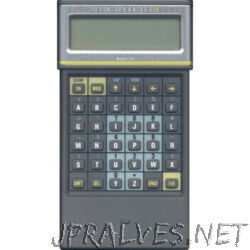Other

“I built a hacky USB interface to the Psion Organiser II that lets you send messages to it over USB serial via an Arduino Nano. It involves the organiser executing machine code stored in a string in its BASIC-like …

Psion Organiser was the brand name of a range of pocket computers developed by the British company Psion in the 1980s. The Organiser I (launched in 1984) and Organiser II (launched in 1986) had a characteristic hard plastic sliding cover protecting a 6×6 keypad instead of a computer keyboard, with letters arranged alphabetically. In 1986, the successful Organiser II introduced many hardware improvements, a better keyboard and display, a much larger ROM and either 8 KB (CM Model), 16 or 32 KB (XP Model), 32 or 64 KB (later LZ Model) of battery-backed RAM, and featured a capable newly designed single-tasking operating system. The first Organiser II models featured a two-line display. The new model supported several different types of improved Datapaks, containing either EPROM or battery-backed RAM storage, each storing between 8 KB and 128 KB of data. Later electrically erasable programmable read-only memory (EEPROM) flashpaks, and random-access memory (RAM) RAMpaks, were added to the range, able to store up to 256 KB on each extension slot.

“I built a hacky USB interface to the Psion Organiser II that lets you send messages to it over USB serial via an Arduino Nano. It involves the organiser executing machine code stored in a string in its BASIC-like …